The Hindu religious festival of Navratri (9 nights and 10 days) began this past Sunday and will end the following Tuesday. It celebrates the feminine nature of the Supreme Divine. It is celebrated twice a year in North India and occurs when the seasons change from cold to hot or vice versa.
In practice, Hindus have a special restricted diet that helps cleanse the body to prepare for the differences in available food due to the seasonal change. My family gives up eating all meat, poultry seafood and eggs during this period.
Needless to say, I make a lot of Indian and Asian food during this time as they offer more variety for vegetarian offerings. Today, I’m highlighting my all-time favorite breakfast item – Muli Di Parontay (Seasoned white radish stuffed flatbread in Punjabi – I can’t call it by any other name).
Normally, pure whole wheat flour is used to make Parathas (oiled, stuffed unleavened flatbread), Rotis (unleavened flatbread) and Puris (fried unleavened flatbread). Flatbread made from pure whole wheat taste sweeter and are moister than those made from a mixture of white and wheat flour.
When making Parathas, here is where I deviate from tradition and why:
- I mix equal parts white and wheat flour for “wet” fillings because the addition of white flour yields a dough that absorbs less water from the filling, thereby making it easier to roll out without tearing. Moreover, I dust the dough with white flour for the same reason. Otherwise, I use pure whole wheat flour for both the dough and for dusting for the other, drier fillings (See Note 1).
- I do not oil the bread on the griddle (Tava) while it cooks. I am trying to eliminate unnecessary fat and calories from my diet. Additionally, when the oil on the Paratha begins to smoke as it cooks, both the vapors and the oil on the Paratha are harmful to breathe and to eat due to the formation of free radicals by the overheated oil. No thank you. I find that I don’t sacrifice flavor (only softness of texture) when I leave the Paratha dry. Normally, I eat it with plain yogurt, pickle or a pat of butter.
Hands-on time: 40 minutes
Cook time: 20 minutes
Yield: 5-6 7-inch Parathas
DOugh FOR a “Wet” filling
- 2 cups whole wheat flour
- 2 cups all-purpose flour
- 1 1/2 cups warm water – you may not need all of it
- 1 teaspoon salt
- 1 tablespoon Chia seed, optional – It’s not traditional, but for health
DOUGH FOR A “Dry” FILLING
- 4 cups whole wheat flour
- 1 1/2 cups warm water – you may not need all of it
- 1 teaspoon salt
- 1 tablespoon Chia seed, optional – It’s not traditional, but for health
White Radish filling (Muli)
- Piece of white radish, 9-inch long and 2 inches in diameter – shredded and squeezed dry – yields about 2 cups
- *1 tablespoon Ajwain (carom seeds)
- *1 teaspoon cayenne pepper powder, or to taste
- *1 1/2 tablespoons coarsely ground coriander seeds
- *1 1/2 tablespoons dry pomegranate seeds or pomegranate seed powder or Sumac powder
- *1/4 cup chopped fresh Cilantro
- Salt, divided use
INSTRUCTIONS FOR THE DOUGH
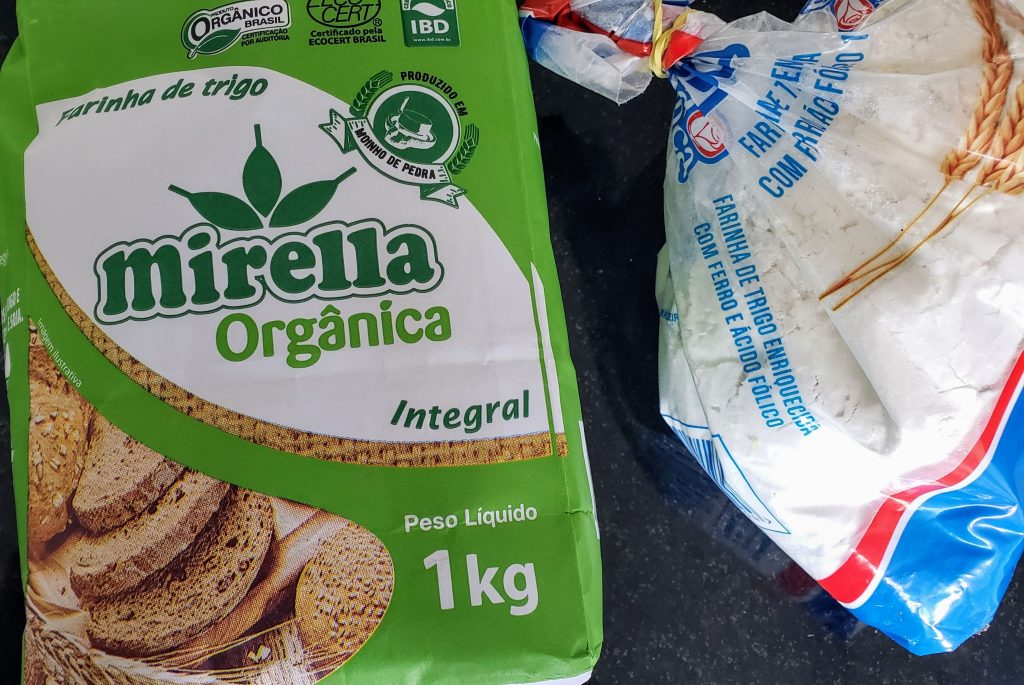
Mix the two flours if using a “wet” filling, otherwise, use only wheat flour.
1. Mix all the dry ingredients until uniform.
2. Add half the water and mix the dough well using your hand. Continue to add water a little at a time while mixing thoroughly between additions.
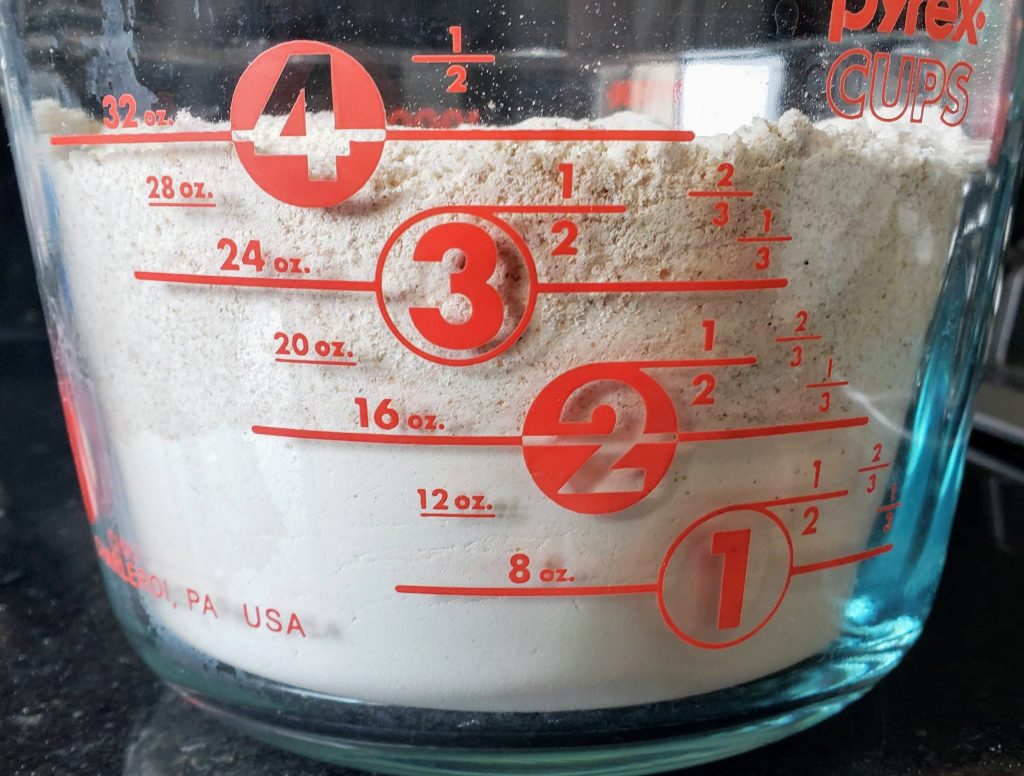
Half white and half wheat flour for “wet” filling 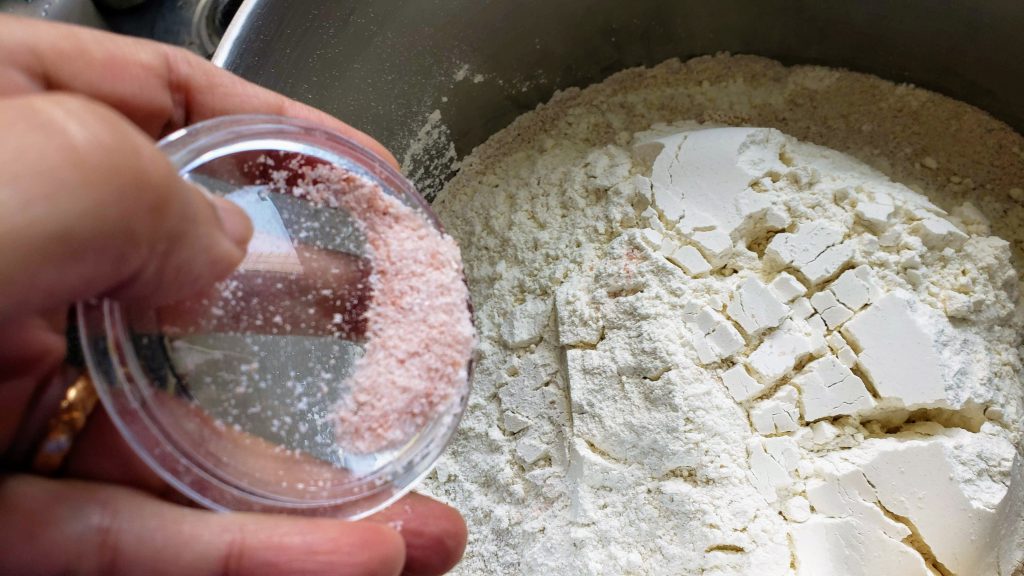
Addition of salt 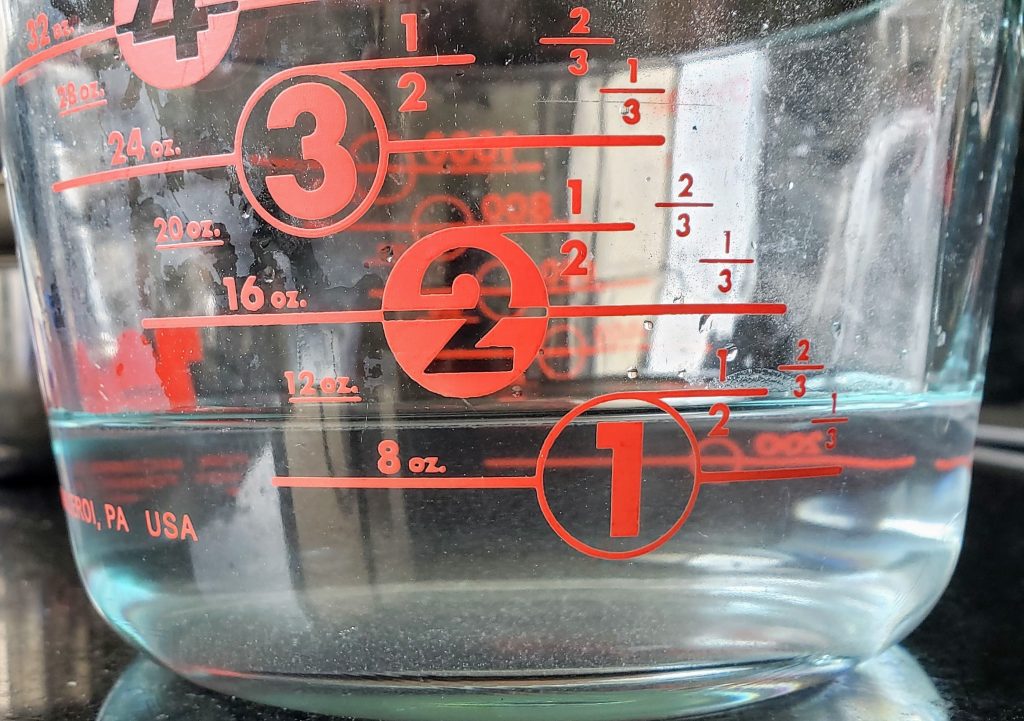
Use warm water
3. When the dough has been thoroughly moistened and is no longer dry, stop adding the water.
4. Knead the dough vigorously for 10 minutes until it forms a smooth ball. It is ready when a hole poked in the center of the dough shrinks quickly. That means you’ve activated the glutens.

After 10 minutes of vigorous kneading 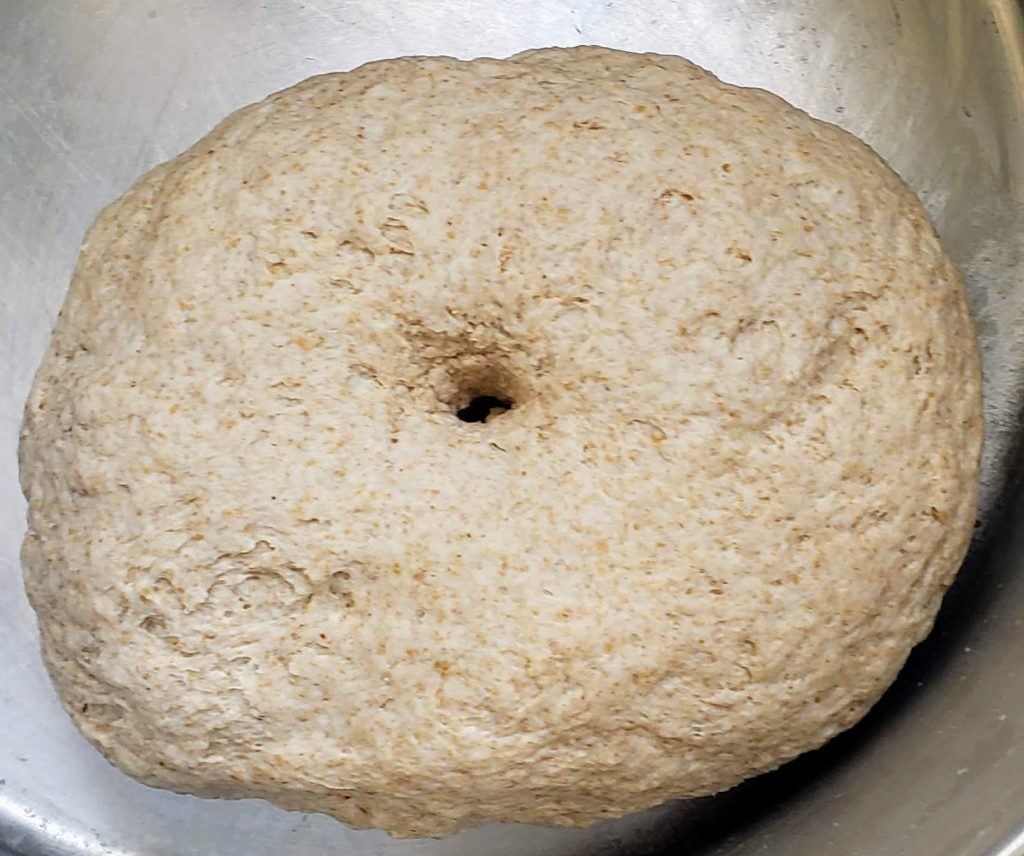
Hole shrinks if kneaded well
5. Cover the dough and let it rest for 30 minutes at room temperature. Meanwhile, prepare the filling.
FILLING PREPARATION
Note: The procedure is the same if you were to use a carrot or a mixture of carrot and white radish for the filling.
1. Wash the radish. Cut off the stem and root ends. Peel and grate it.
2. It is quickest if you use a food processor attachment to do this, otherwise, use a box grater.
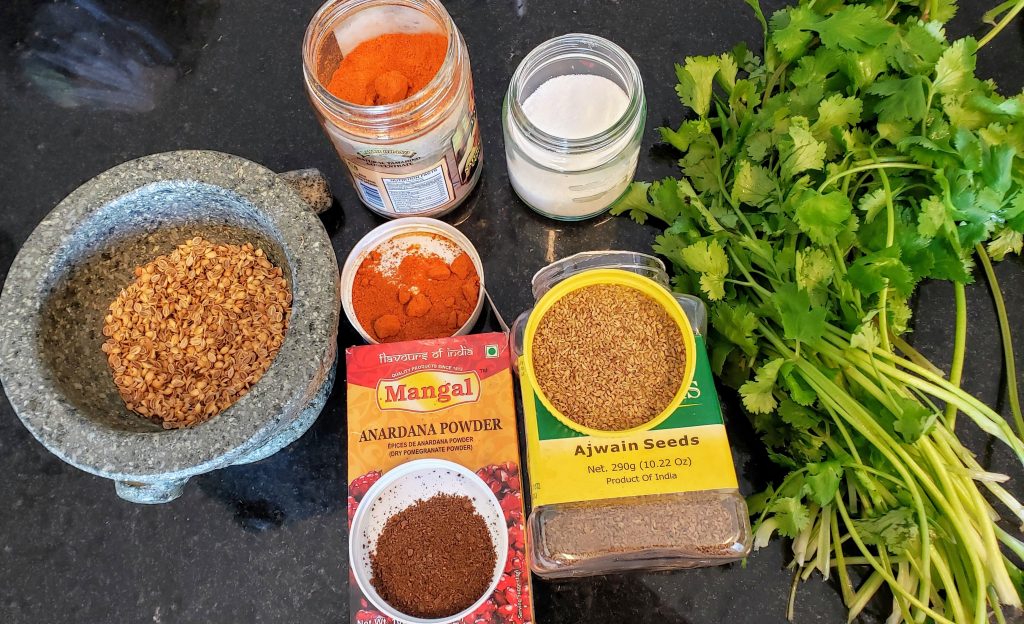
Cayenne pepper, salt, Coarsely ground coriander, Anardana powder, Ajwain, cilantro 
peeled white radish 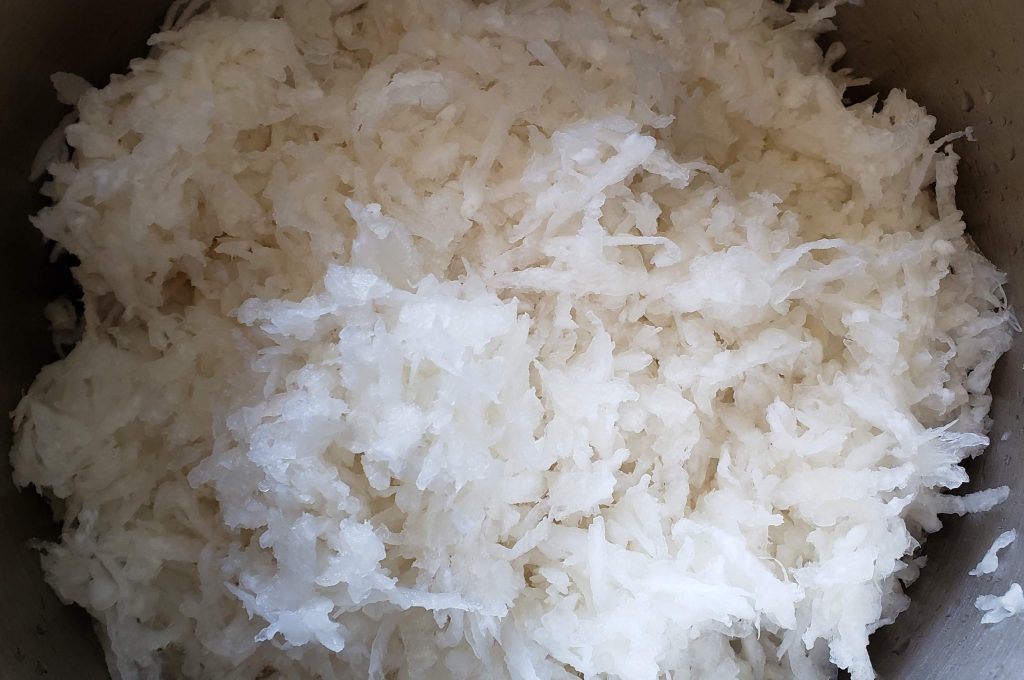
grated radish
3. Add 1 teaspoon of salt to the grated radish and mix well.
4. Meanwhile, thoroughly wash (I wash it 3-5 times to remove all traces of sand) and chop the cilantro. Place it in a mixing bowl. (I placed them on a cutting board because it was easier to demonstrate without the obstruction of the bowl)

Chopped cilantro
5. Gather as much grated radish as you can in your hand and squeeze out as much water from it as you can. It should feel dry. Place it in the bowl with the chopped cilantro.
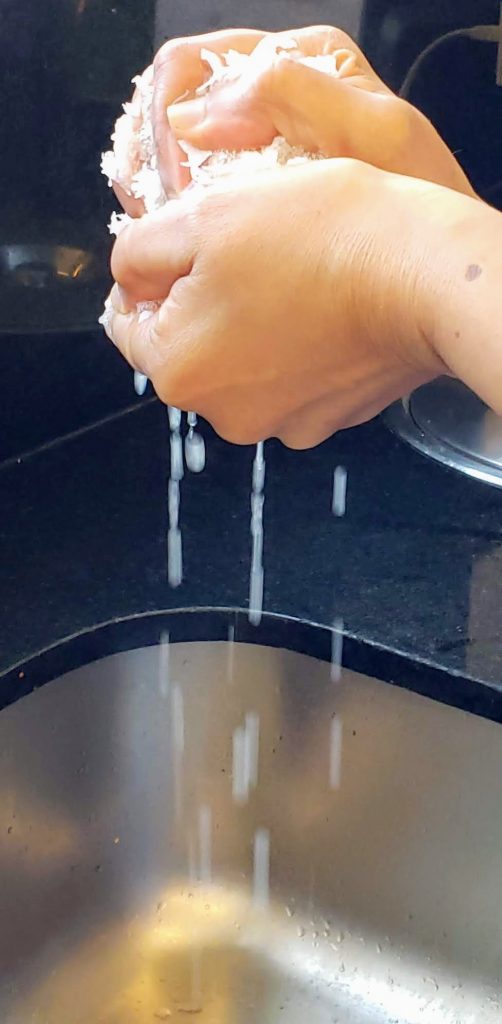
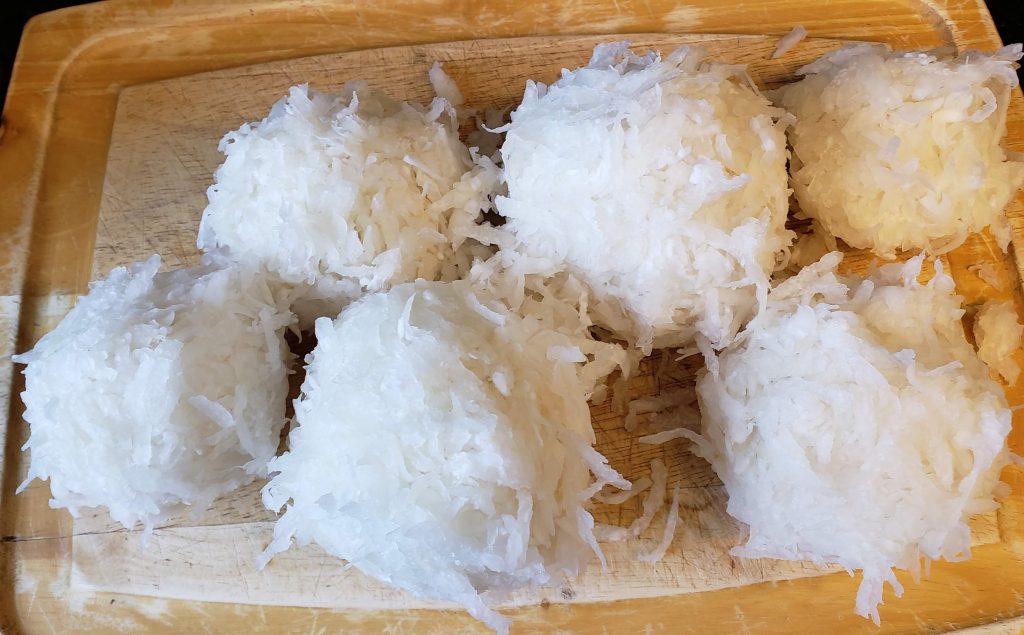
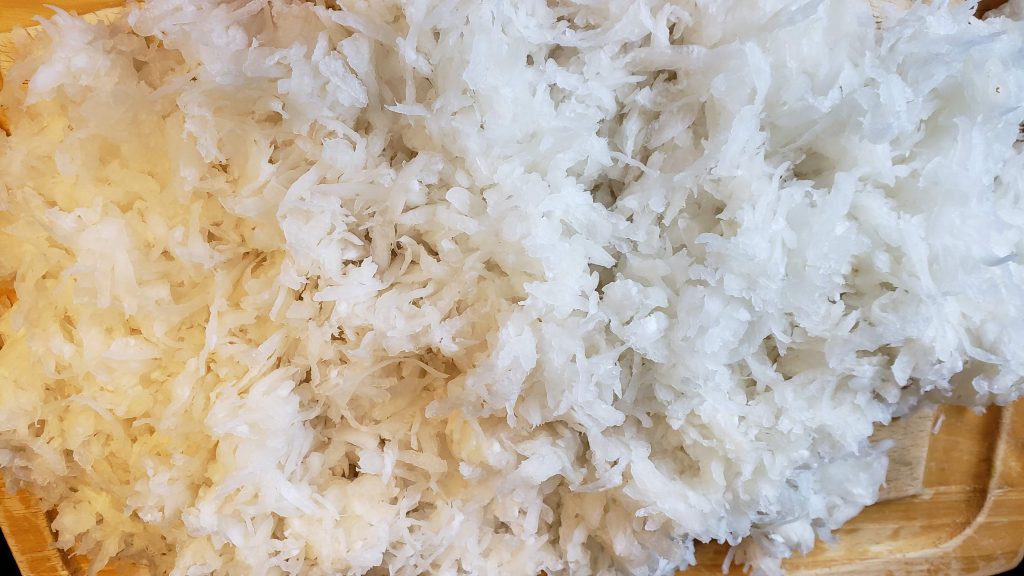
Squeezed dry radish
6. Add the seasonings to the bowl and mix well. Correct the salt.

seasonings added to radish 
mix spices and radish 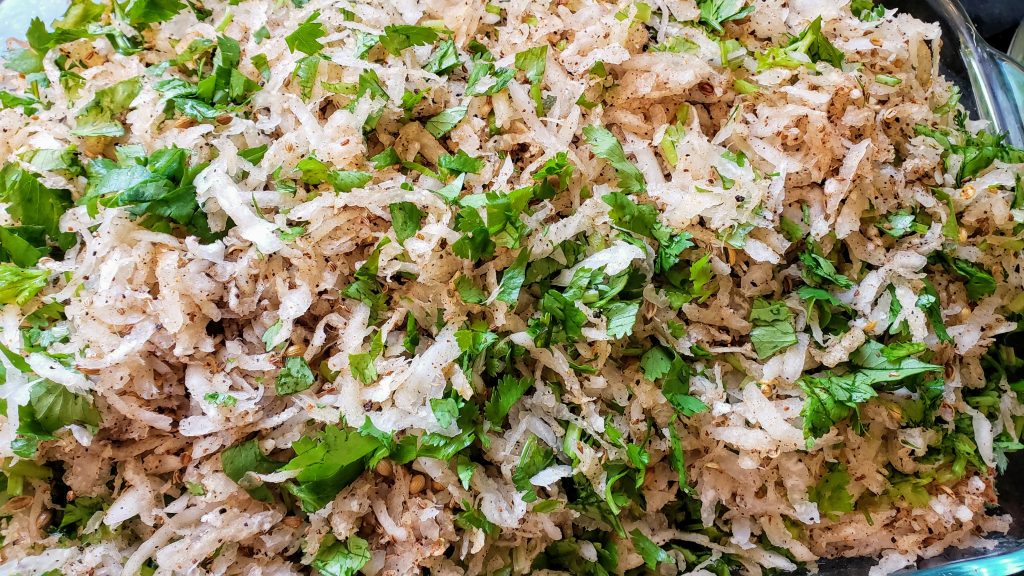
7. Now you are ready to roll, pun intended. Sigh…I know, I know.
ROLLING OUT THE PARATHA
1. Set up the area for rolling out the dough by placing the workspace near the Tava, or skillet or griddle. Put 1 cup of dry flour in a container for dusting.
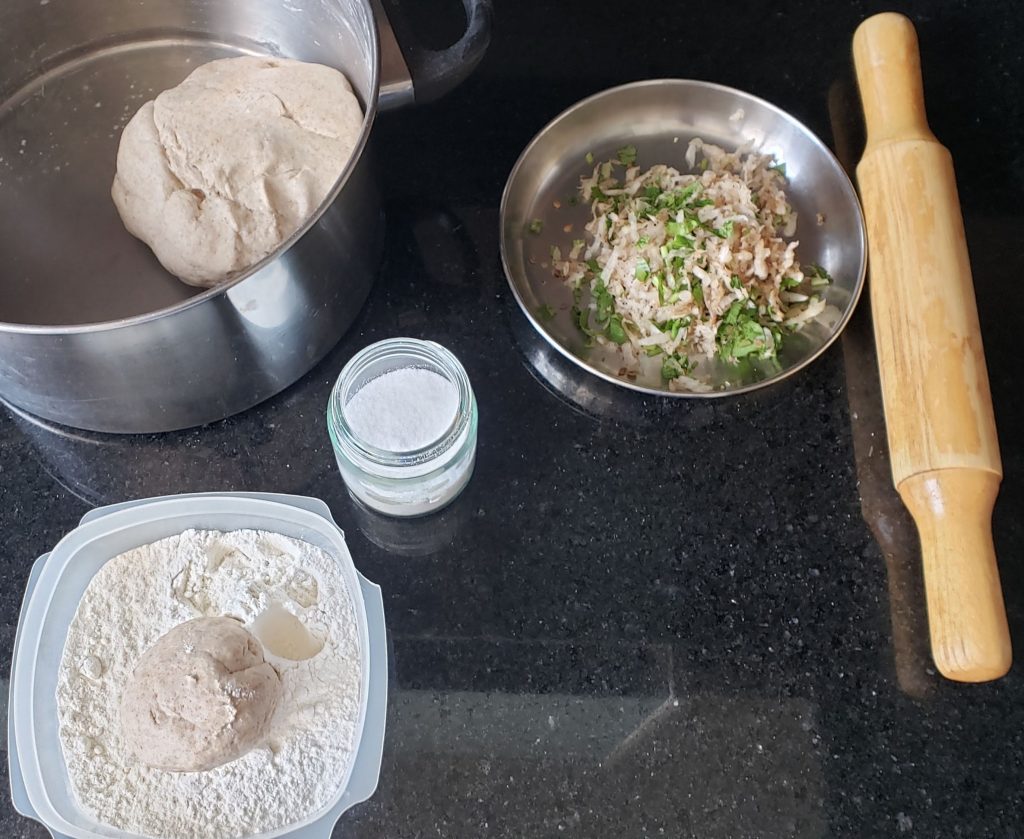
Set up: Rested dough; seasoned filling, Salt, 2-inch ball of dough, flour for dusting
2. Tear off a 2-inch ball of dough and roll it into the dry flour.
3. Flatten it out into a 4-inch diameter disk with either your fingers or a rolling pin.
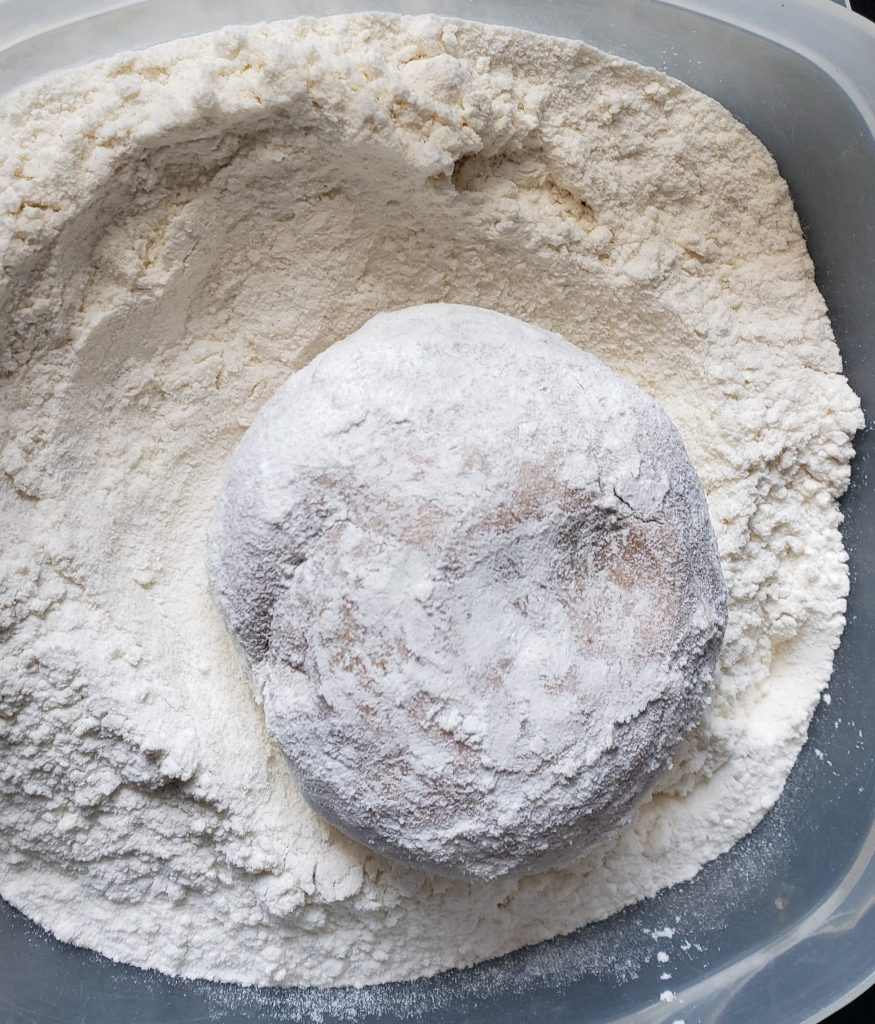
dusting the dough 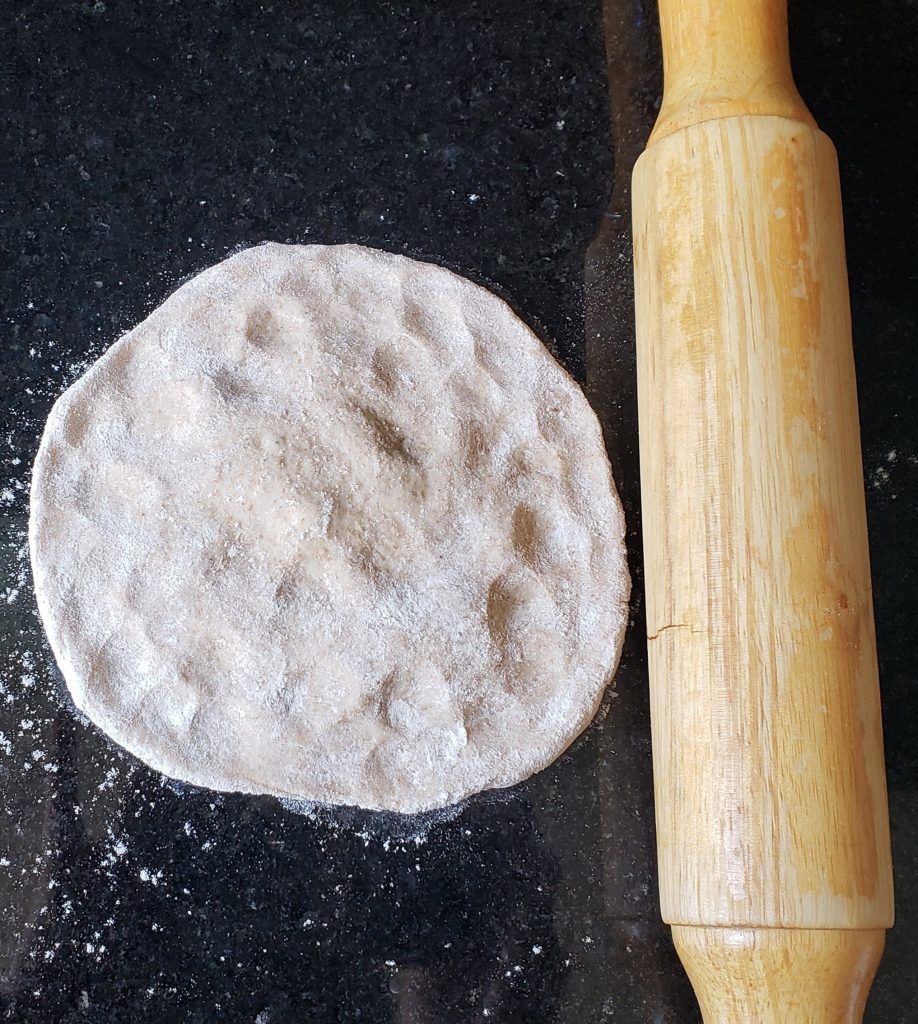
4-inch disk
4. If you are right-handed, place the disk of dough in your left palm and put 1/3 cup of the filling in the center of the disk. Starting from the center of the disk, pinch the edges shut and continue until you have closed the dough completely over the filling.
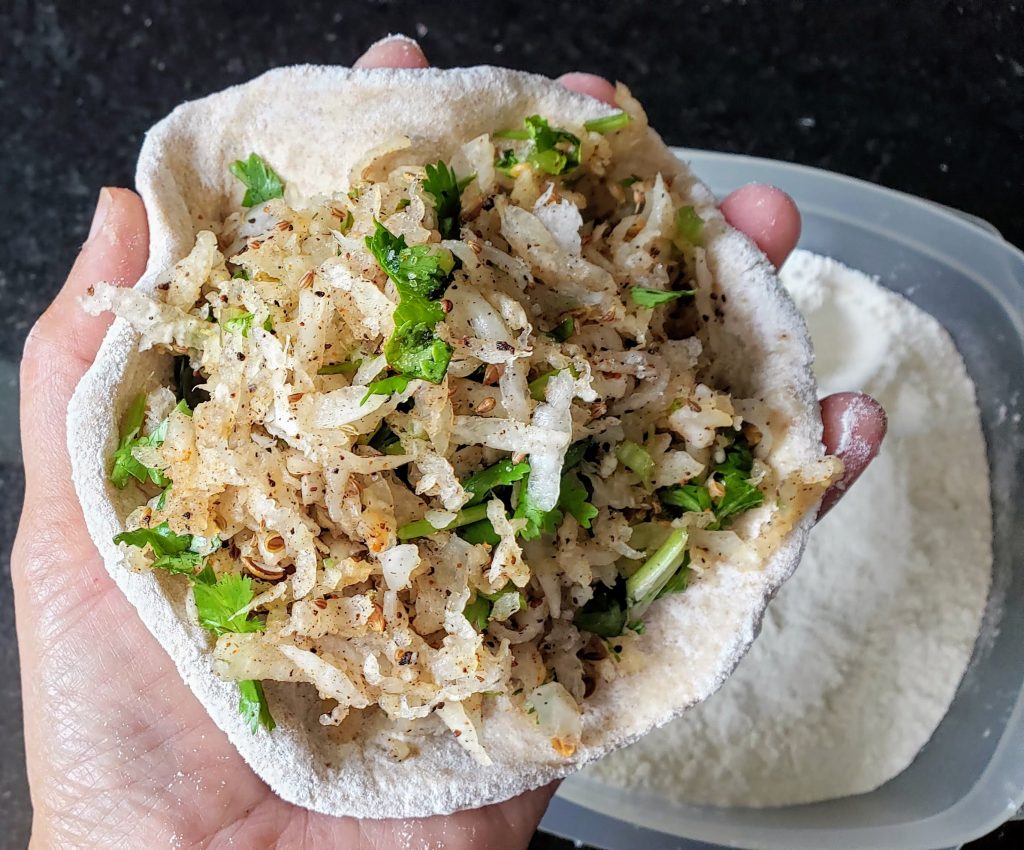
Place the filling into the disk 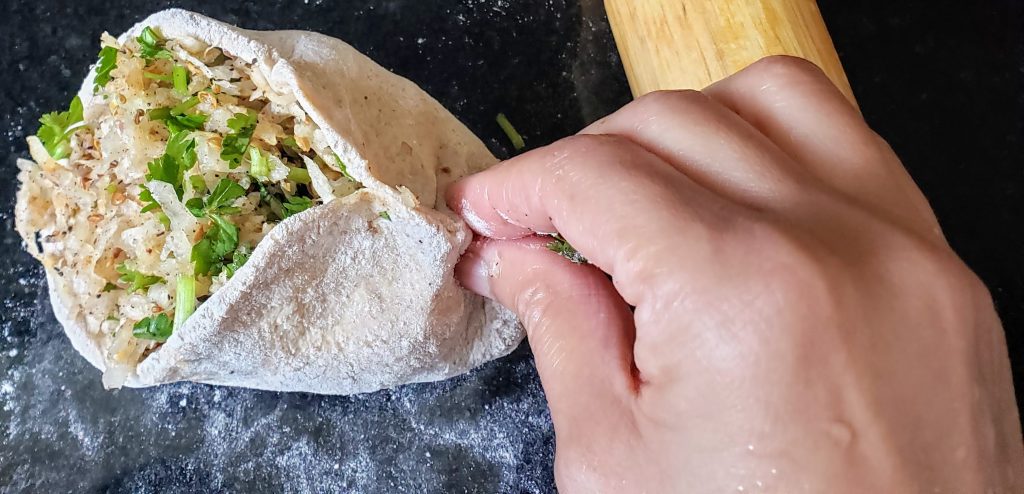
pinch up the edges of the disk 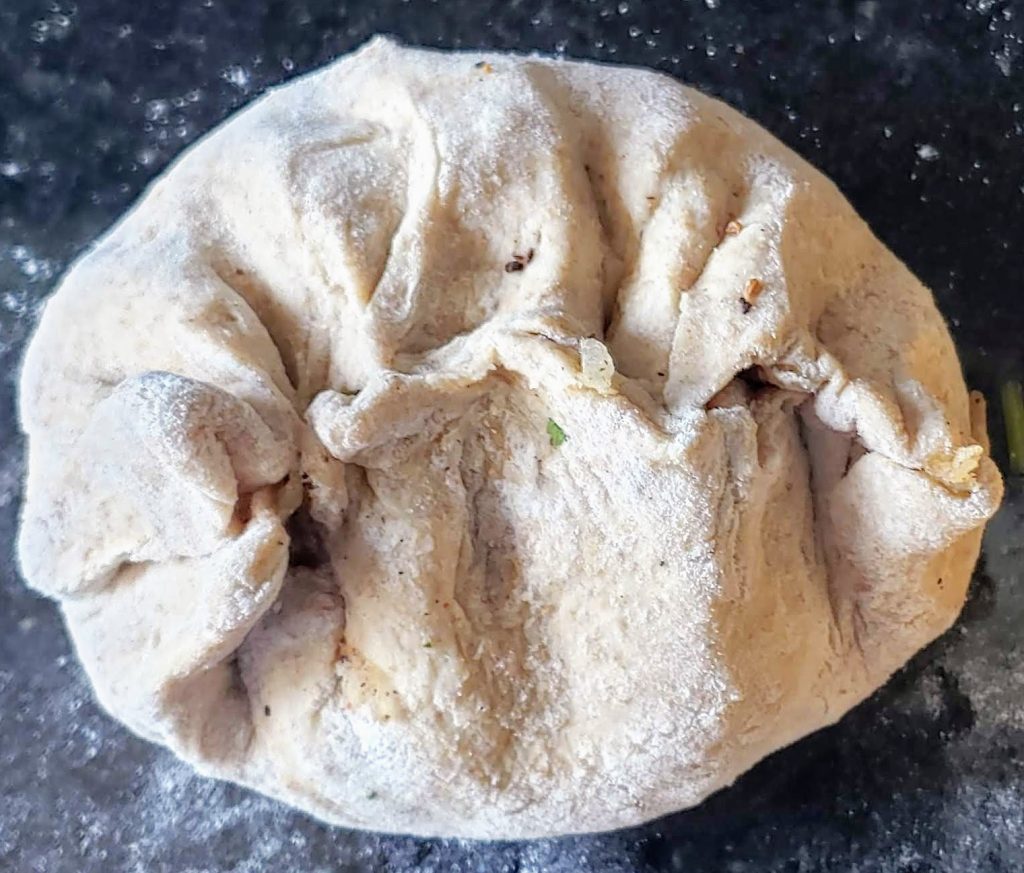
A stuffed semi-circle of dough
5. Bring the end pieces of the semi-circle of the dough to the center and pinch them together and fold over the flap to seal.
6. The stuffed ball should now be approximately 3 inches in diameter. Place it in the dish with the dry flour and dust both sides well.

Pinching up the corners of the semi-circle 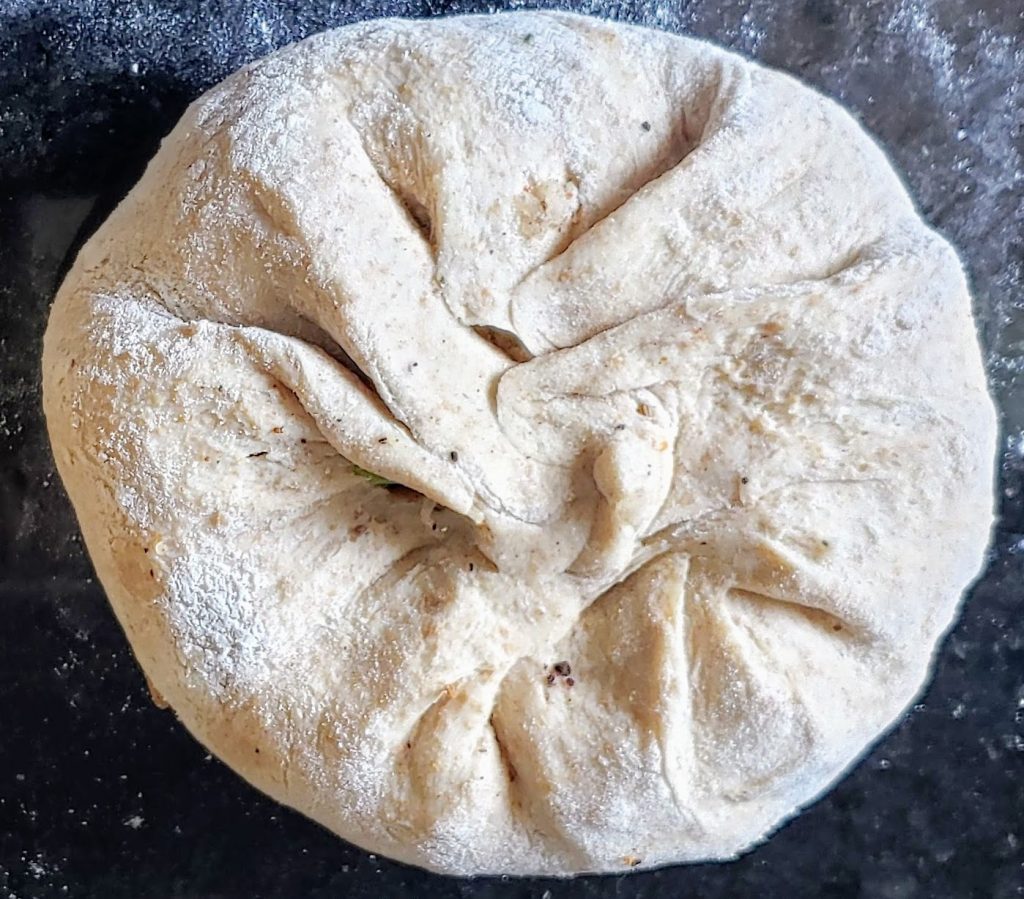
folding over the flap of dough to seal 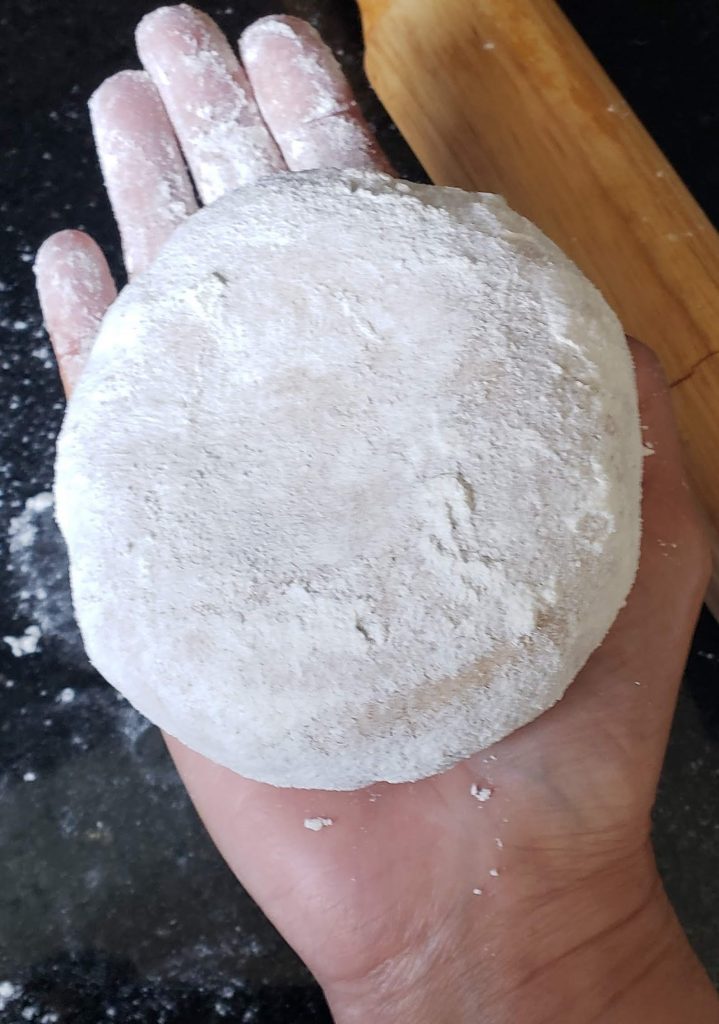
About 3 inches in diameter
7. Place it seam-side down on the counter and roll it out in the vertical direction until it is double in size. You must leave it seam-side down the entire time you are rolling it out; otherwise, the filling will tear the dough as the other side is thinner.
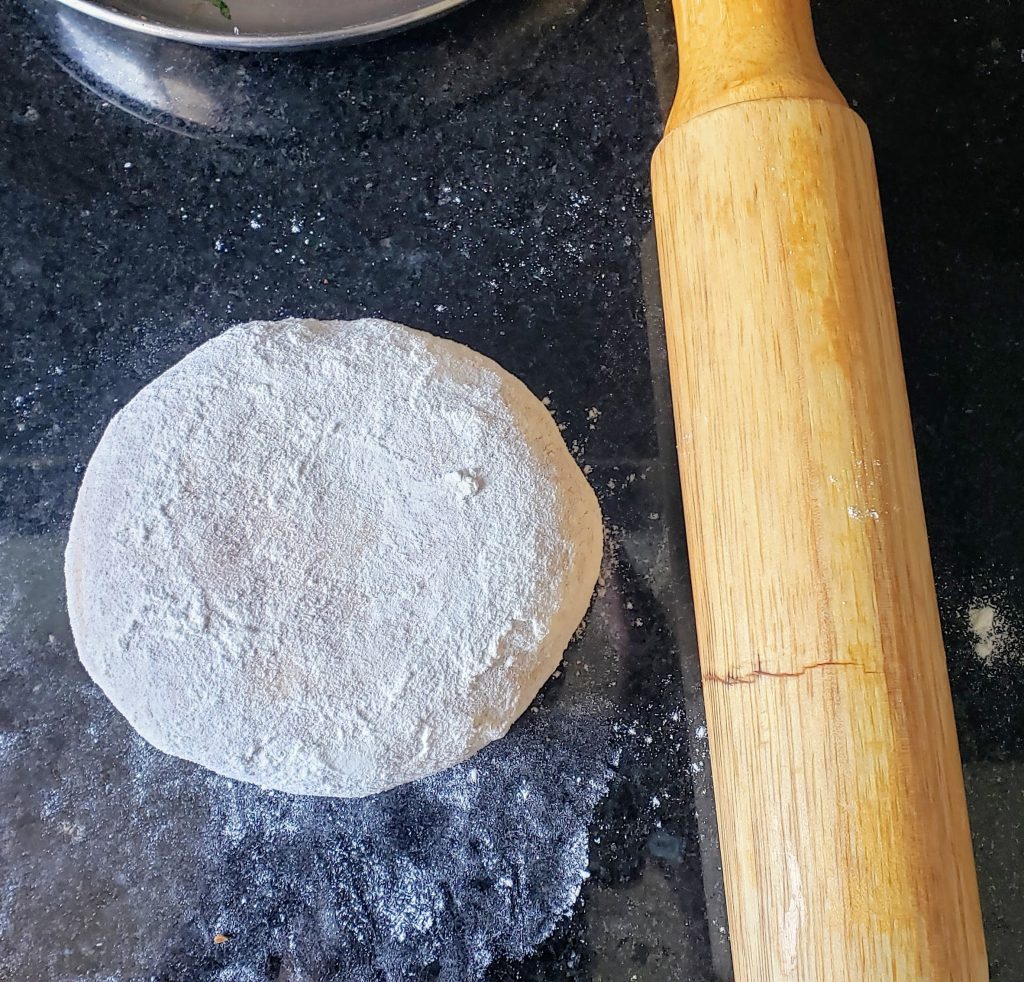
Seam-side down 
roll out to double in the vertical direction
8. Add more flour to both sides, if needed and turn it 90 degrees and roll it out again. Continue to roll it out until it forms a 7-inch diameter circle about a 1/4-inch thick.
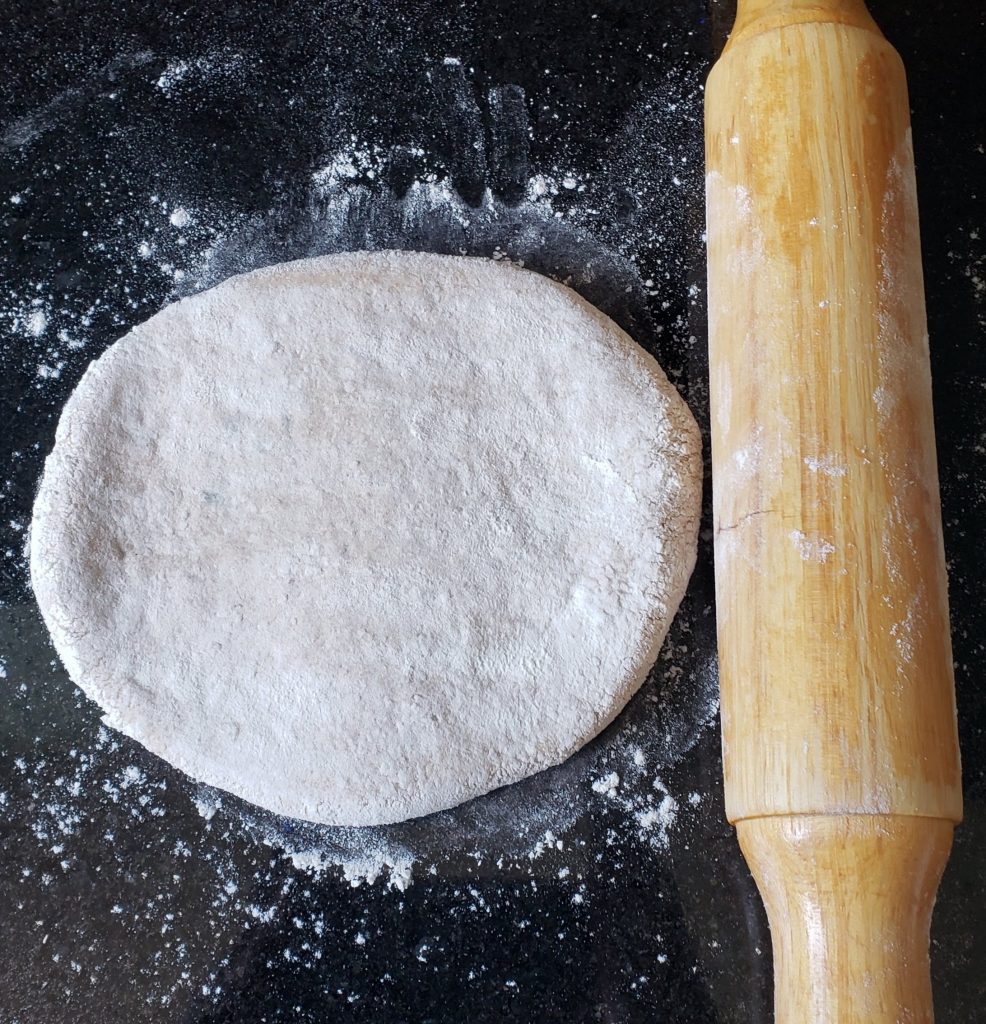
Rotated 90 degrees 
rolling out in the vertical direction 
7-inch circle with a 1/4-inch thickness
COOKING THE PARATHA
1. Heat up the Tava, or large cast-iron skillet, or griddle, or large non-stick skillet over medium-high heat.
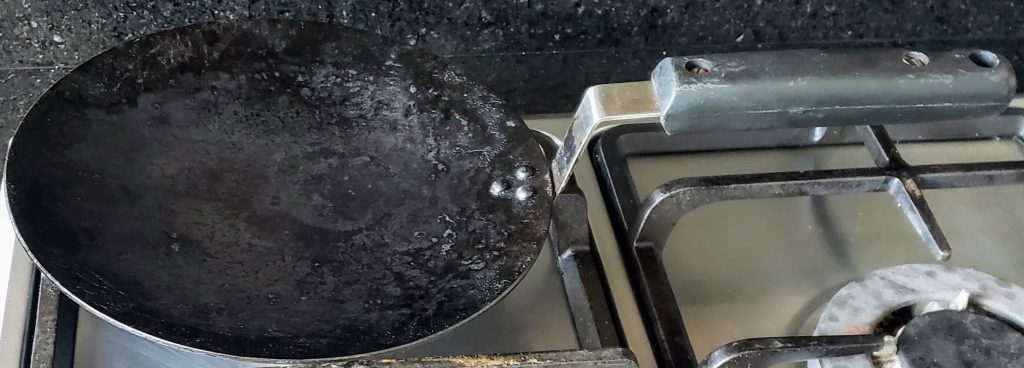
Tava
2. Lightly dust the top of the paratha with flour and fold it in half. Pick up the semi-circle of dough and place it on the hot pan and unfold it back to a circle.
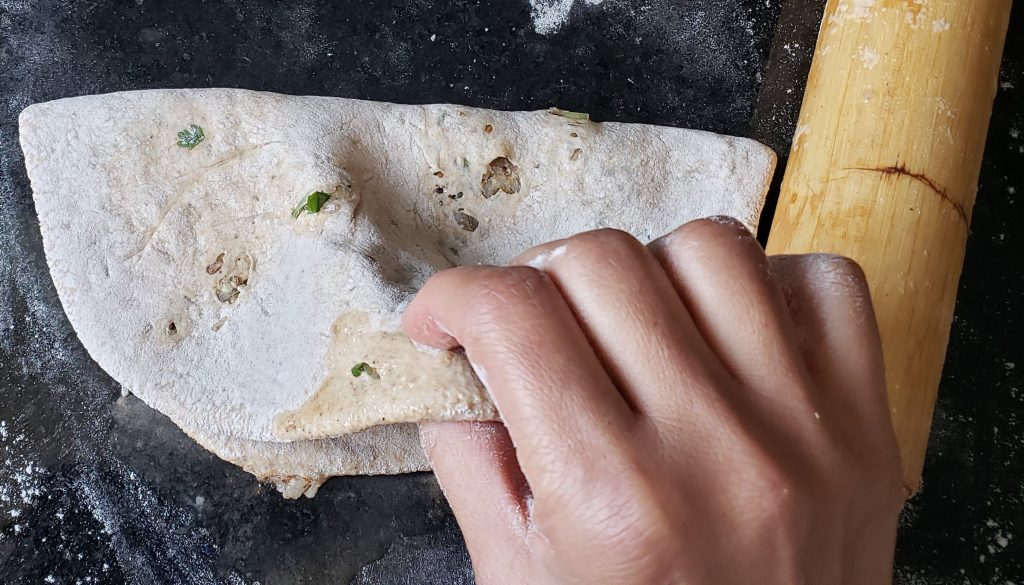
Fold over rolled Paratha to ease transfer to Tava 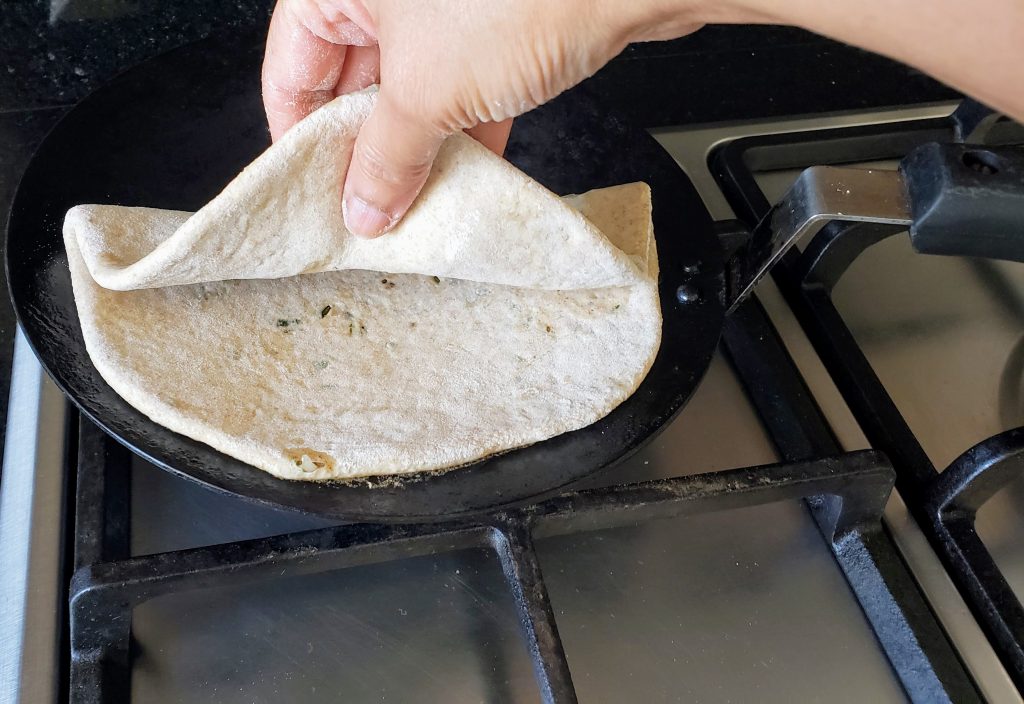
Place it on hot Tava 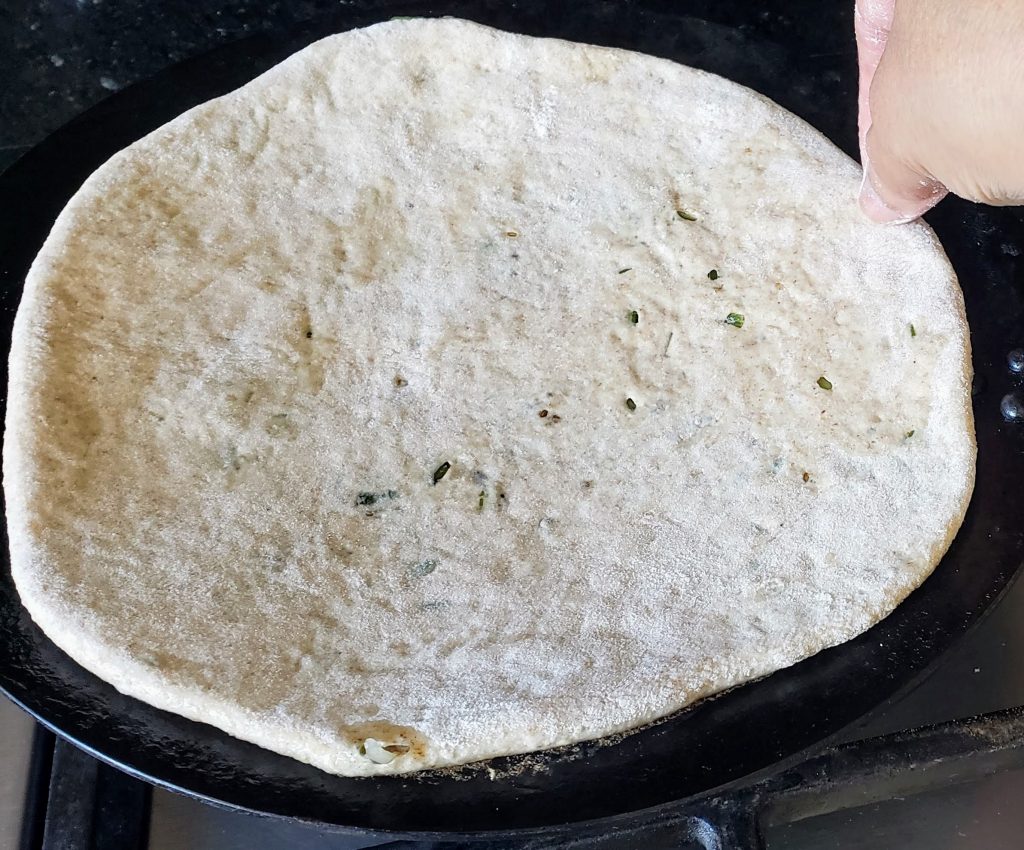
Unfold for cooking
3. Let the paratha cook for about 1 1/2-2 minutes on one side and flip it. You can tell if it is ready to turn over by observing the edges of the dough. The paratha will appear drier at the top and the dusting of flour will not be present at the very edge as it cooks.
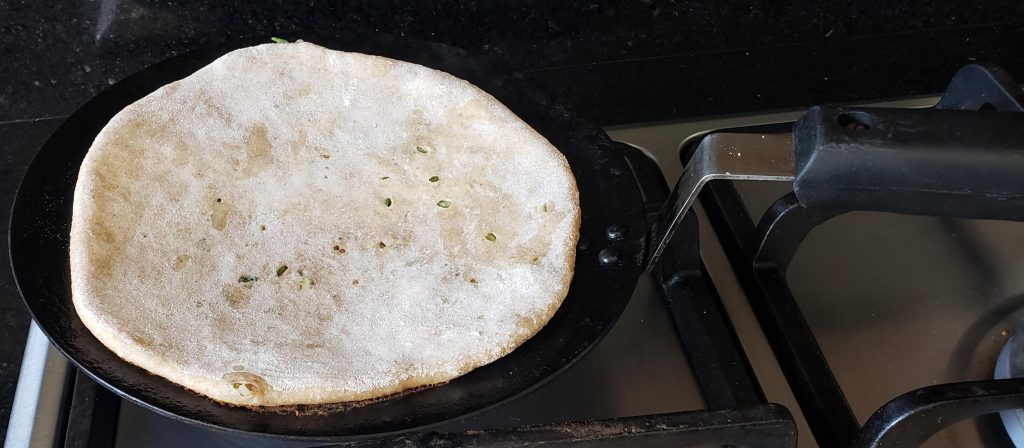
Paratha appears dry on top 
No dry flour appears on the outer edge 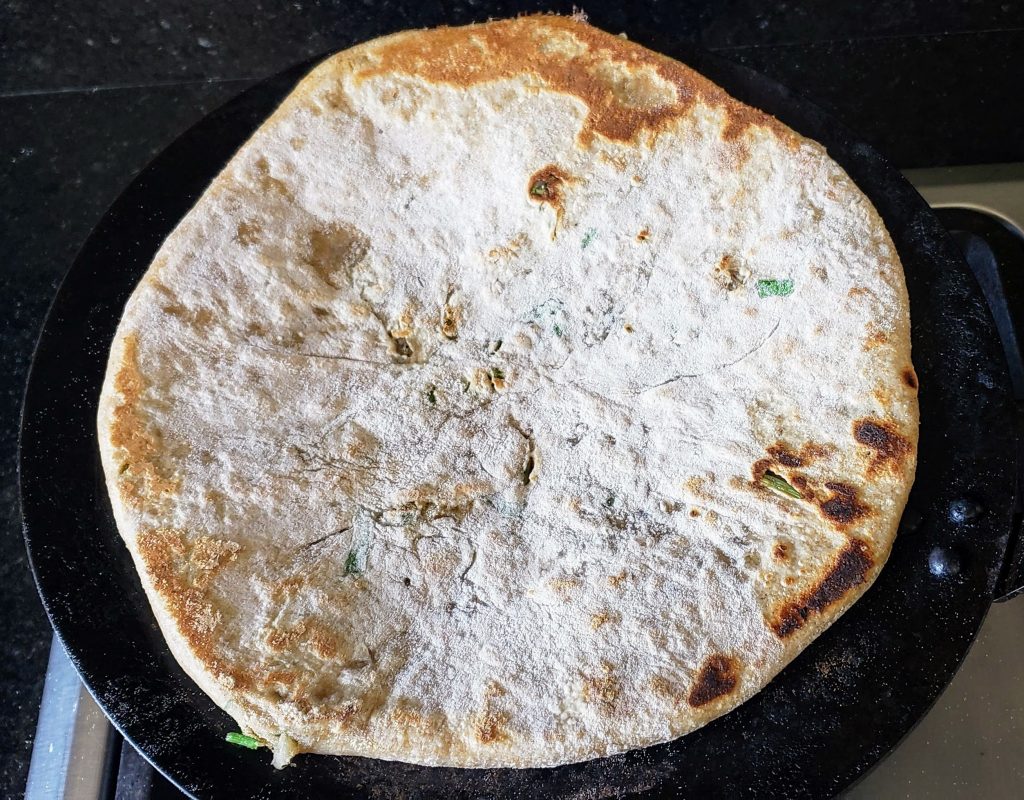
Perfectly cooked on the bottom
4. Let it cook for 2 minutes on the other side or until it is lightly dotted with brown spots. You don’t want to burn it. You may need to reduce the heat if you see scorching.
5. It is up to you, you can add a light coating of Ghee or oil to this side or leave it dry as I do.

Brown dots indicate well cooked
6. Flip it back to the first side and continue to cook for another minute.
7. Again, it is up to you, you can add a light coating of Ghee or oil to this side or leave it dry as I do. However, if you do add the ghee, flip it again and cook it for a few seconds before removing it onto a plate for serving.
8. Eat it piping hot with a pat of butter and/or a cup of plain yogurt for dipping and/or a side of pickle.
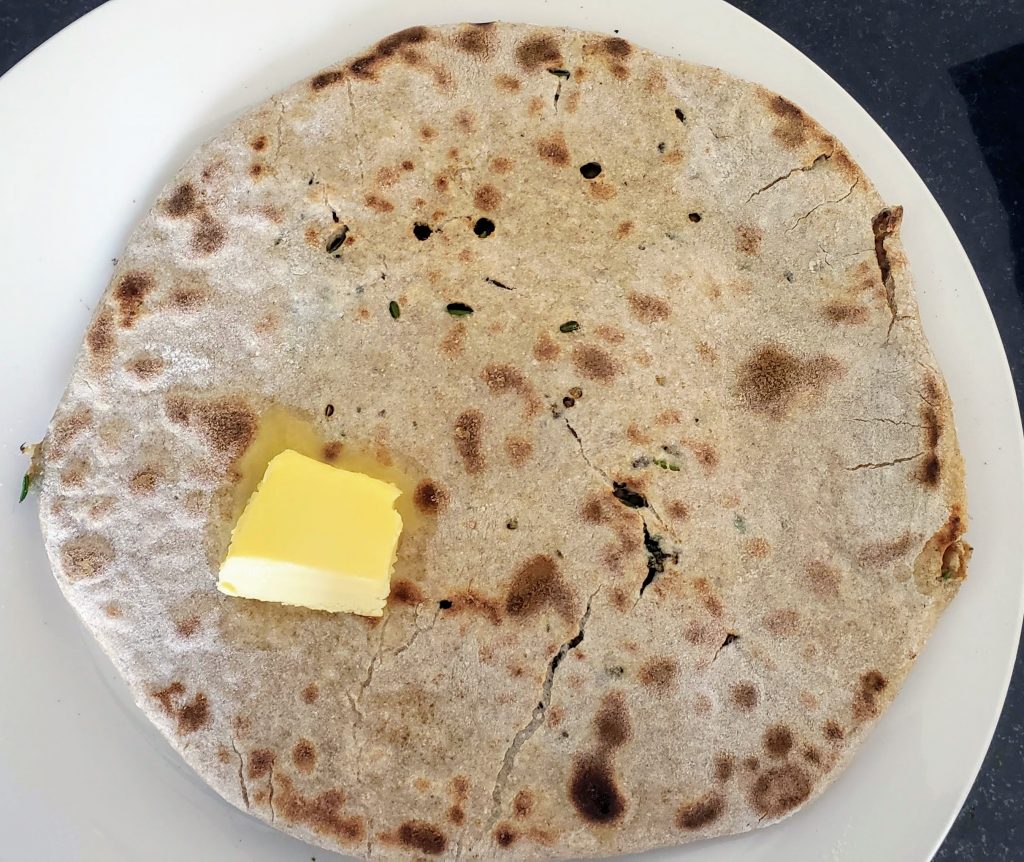
Serve hot with a pat of butter
Aside: Any leftover dough or filling can be refrigerated in separate sealed containers for up to a week. Leftover dough can also be frozen.
Note 1: Here are possible fillings for Parathas.
The first four items on the list are “wet” fillings. I would advise you to mix both white and wheat flour in either a 3:1 ratio ( 3 parts wheat to 1 part white) or a 1:1 ratio (equal parts for both) for these fillings.
The other three are “dry” fillings. You can use pure whole wheat for these.
- Grated cauliflower with the same seasonings as above, but with the addition of 1″ piece of grated ginger – Gobi Ka Paratha;
- Grated, squeezed dry carrots using the same procedure and seasonings as above – Gajjar Ka Paratha;
- Mixed grated carrot and white radish using the same procedure and seasonings as above – Gajjar Aur Muli Ka Paratha
- Minced onion with the same seasonings as above – Payaz Ka Paratha;
- Dry, cooked and seasoned pigeon peas (Chana dal) with the same seasonings as above without carom seeds – Dal Ka Paratha;
- Boiled, grated potatoes prepared the same as above without carom seeds – Aloo Paratha.
- 3/4 teaspoon Carom seeds and 3/4 teaspoon salt – Ajwain Ka Paratha.
Note 2:*These ingredients may be purchased at your local Indian grocer. For this reason, I have given you the name of the spice both in English and Hindi as that is the name (written phonetically in the English alphabet) you will find it under when you go shopping.
Spices impart specific flavors and aromas that enhance the overall flavor of the dish when used correctly. Moreover, they have a lot of health benefits. The list below specifies:
- The name of the spice;
- The flavor(s) it imparts;
- How and when it may be used; and, finally,
- It’s health benefits.
Ajwain (carom seeds) – Astringent, sharp. Add last to season cooking oil as it is very strong and may turn bitter. It is used in making Kari (a stew made from gram flour) and added to lentil batters as it helps combat gas and bloating. Generally used in doughs or made into decoctions with a little salt for gas pain. Chew 1/2 a teaspoon of the seeds with 1/8 teaspoon of salt to get instant relief from acidity and/or gas pain. Good for indigestion and reducing gas. A decoction of the seeds is ingested with the addition of a little salt as a digestive aid. It is an anti-inflammatory. Carom is also an anti-oxidant and has anti-bacterial and anti-fungal properties. It is also high in iron.
Dried Pomegranate seeds (anardana) – Sour, fruity. If using it in the powdered form to season cooked food, add it after the burner has been turned off. Used whole or in powder form to season vegetable stuffings when making flatbreads (Parathas) or savory pastries (Samosas and Kachoris). Used to season boiled, dry bean dishes (kale chole) and potato and vegetable cutlets (Tikis). Made into candy and eaten. Natural aphrodisiac; lowers blood pressure; improves heart health; and, improves memory. It contains punicic acid, an Omega-5 fatty acid that helps fight breast cancer.
Cayenne pepper – Spicy, sharp. Added directly after the dried whole spices either in its fresh or powdered form. When using its whole, dried form, add it in the middle when seasoning the oil. Minced and mixed in Chaat and bean salads or used whole, as a condiment or in a mixed vegetable salad. Hot peppers are often eaten as pickles. Powdered, whole dried, or fresh minced chili peppers are used in cooking and added directly after the dried spices to season the cooking oil., Hot peppers have anti-bacterial; anti-fungal; anti-inflammatory; and, anti-oxidant properties. It helps fight the cold/flu; reduces joint pain; improves metabolism; promotes weight loss; and, is rich in vitamins A, B6, C, K1, and minerals like potassium and copper.
Dhania (fresh coriander) – Citrus-like, Soapy. Either you’ll love it or hate it. Both leaves and stems are used as a condiment and added to food at the end of cooking as decoration, an aromatic and a flavor enhancer. It is used all over Asia and in Latin America. It is made into chutneys and salsas. It is chopped and added to salads. It is baked as part of stuffing into bread such as parathas. It is added to vegetarian and meat dishes alike. Coriander may protect your heart by lowering blood pressure and LDL (bad) cholesterol while increasing HDL (good) cholesterol. It is an antimicrobial, antioxidant and reduces the symptoms of Irritable Bowel Syndrome such as bloating or gas.
Sooka Dhania (coriander seeds) – Smoky (if left whole) and sour (if ground). It is added in its split form to the cooking oil in the middle of the seasoning process. If using it in the powdered form to season cooked food, add it after the burner has been turned off. Used in powder form to season vegetable stuffings when making flatbreads (Parathas) or savory pastries (Samosas and Kachoris). Used roasted and coarsely ground to season cooking oil in vegetarian and meat gravies. Ground into a powder and used at the end to layer flavor in both vegetarian and meat dishes. It is one of the components of Garam Masala. Whole seeds are boiled into a tisane to relieve menstrual cramps during heavy flow. High in fiber and aids in bowel movement; promotes insulin production. Rich in copper, zinc, and iron and vitamins K, C, and B which are good for healthy skin and hair. It assists in weight loss and reduces body fat. FYI, plant coriander seeds to get fresh coriander plants.
Written by Anju Kapur of Anju’s Table. All content and images on this site are copyright protected. Please do not use any of my images without my permission. Should you wish to share this recipe on your site, please add a link to this post as the source.
